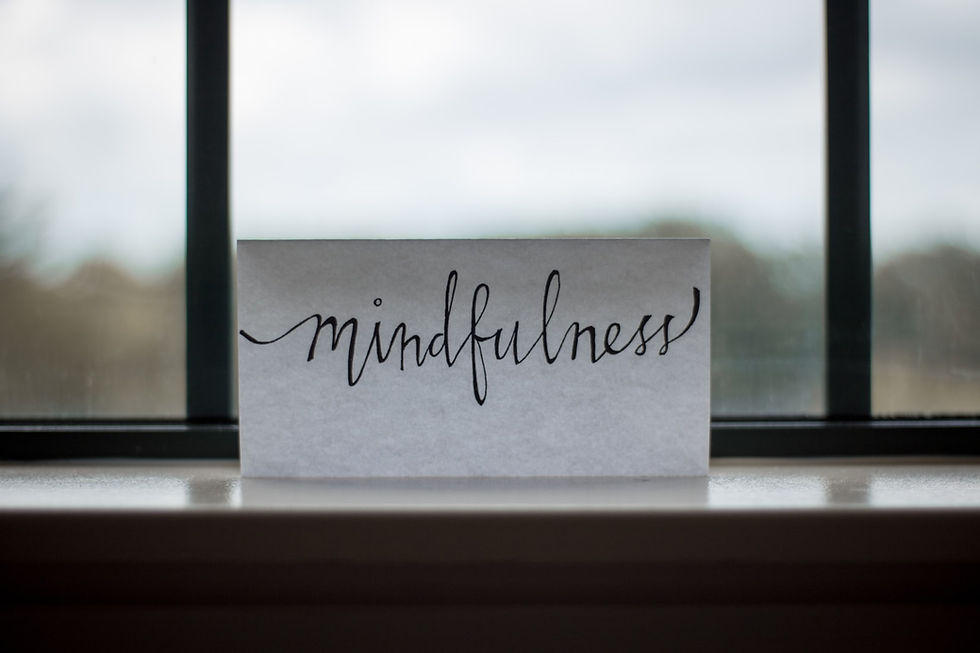Awareness of Yourself
The only person you truly spend all day with is yourself. The self is essentially who we are as beings, and we are human beings. Human beings are living entities with a mind, a body and spirit. Our spirits are all individual and unique which distinguishes us from the others. Spirit and awareness can guide us just as our body's posture can guide us and talk to us; that is why it is important that we listen to it.

Postural Habits
A good posture is maintained through self-awareness. Self-awareness of one's own posture, as mentioned above, is the first step to having an ideal posture. An ideal posture looks and feels different for everyone, but there's one crucial factor that affects everyone the same and that's gravity. We must make a conscious effort to prevent gravity from weighing us down. For instance, the weight that bears down on the body from slouching in your chair, crossing your legs when you sit, or letting your head fall forward can lead to chronic pain. If you catch yourself in one of these poor postures throughout the day, make a conscious effort to correct them... a.k.a- sit up straight!
"Re-learning or re-education is comparatively easy" as Moshe Feldenkrais once said. This holds true in reference to our musculature. The Feldenkrais Method re-educates musculature by 'using the reversible relationship of our musculature and nervous systems'.
The best example that I can share of this would be when we are about to sit down. Consciously placing ourselves into our seat with controlled voluntary action rather than "plopping" ourselves down. The shock the coccyx, sacrum, or spine absorbs during such a regular everyday action can cause damage over time. However, for a minimal effort required from the body and mind, just a simple reminder to control the action of a squat until we're softly sitting down. This is one example of one habit that can be reversed by the body moving through awareness.

Ideal Posture
There are a few ways to feel an ideal posture either lying down, seated, standing or using a stability ball. For the first position, lie down on your back on a mat and bend your knees. You should feel contact with the floor at your head, scapulae, ribs and sacrum. There should be a spacing under your neck and the small of your lower back. These should indicate a general symmetry of the upper body while lying supine.
You can also check your alignment in a seated position with your back up against the wall, and legs hovering 90 degrees parallel to the floor, like a wall-sit exercise. The back of your head, shoulders, ribs and sacrum should be able to touch the wall.
Now standing flat against the wall, look for the same cues in the wall-sit plus check to see if the back of your thighs, calves and heels can now touch the wall as well. Of course, the size of one's glutes may get in the way here, this is why these are general examples. Say you're a more proportionate person in this case, and if there are certain areas where you cannot touch, then chances are there is something to asses in that part of your body.

Finally, the core. Core strength plays an important factor in maintaining ideal posture because it is the core muscles that help stabilize the spine. Sitting on a stability ball, pulling the navel into the spine while breathing into the diaphragm is a basic and effective way to activate your core muscles, while trying to remain stable, can help achieve better core strength overtime.
Likewise, through many other exercises, plus stretching, breathwork and massage therapy, these areas can gain what they need in order to improve these cues.
Posture Through the Eyes of a Therapist
For the general public, pain is the key motivator for intervention. For manual therapists, posture is our key motivator for intervention. We ask ourselves how does the person in front of us line up in relation to gravity and their posture will tell us which bio-mechanical feature is being altered and how. It can be through muscle tension, leg length discrepancies, hip or shoulder level imbalances, stability of spinal curvatures- such a hyper-kyphosis, hyper-lordosis, scoliosis, etc.

One of the therapist's objectives in a massage or bodywork session should be to find out the client's occupation and everyday activities so that we can get a better felt sense of what their body goes through- process of understanding by imitation. Walk a day in your client's shoes, so to speak! We should also find out the client's main objective, where they want to feel relief and what do they want to feel. It is the bodyworker's job to respect that and integrate their own goal for the session derived from the recent or previous findings.
For example, my techniques derived from kinesitherapy training, uses soft tissue remodeling to correct a postural or structural imbalance.
Then comes the prevention of a bad position returning, which means the end of a massage is just the beginning! As I do in my practice, I equip my clients with a fuller knowledge of what's going on with their body. You're leaving with recommendations of stretches and exercises custom to your own posture, allowing you to alleviate your own pain and stress even when we're apart. I encourage my clients to enter a new world of gait control, once again, through self-awareness. However, no one can help you without the will of wanting to help yourself first. Simply paying attention is the way.
Listen to your body's messages and you will be able to manage pain more easily. Fall in love with taking care of yourself, and help your body stay aligned.
For inspiration on how to be more mindful, visit The Body Blog's Quotes & Mantras board on Pinterest!

Comments